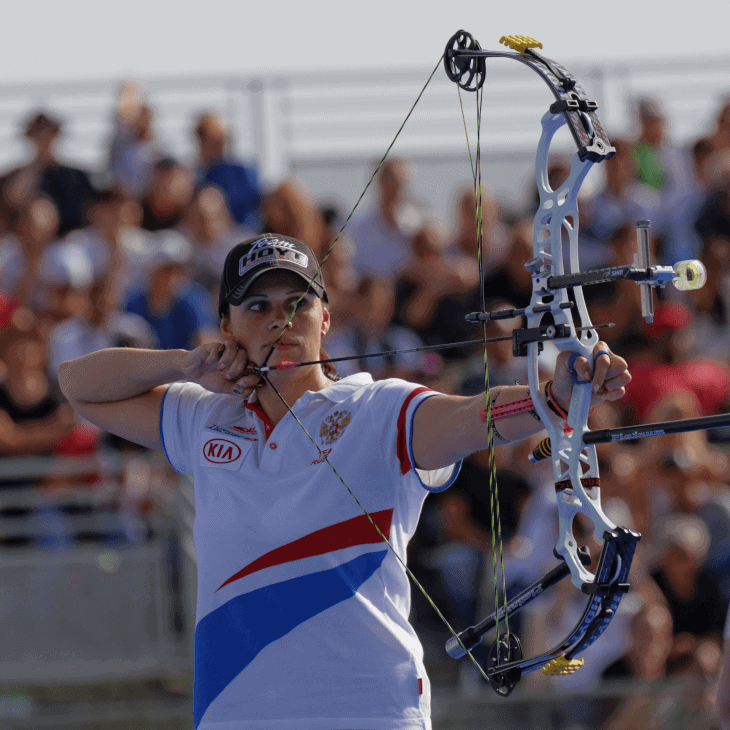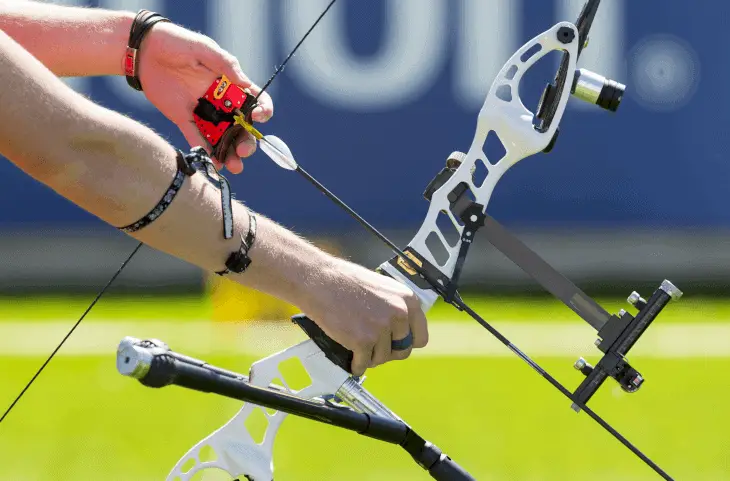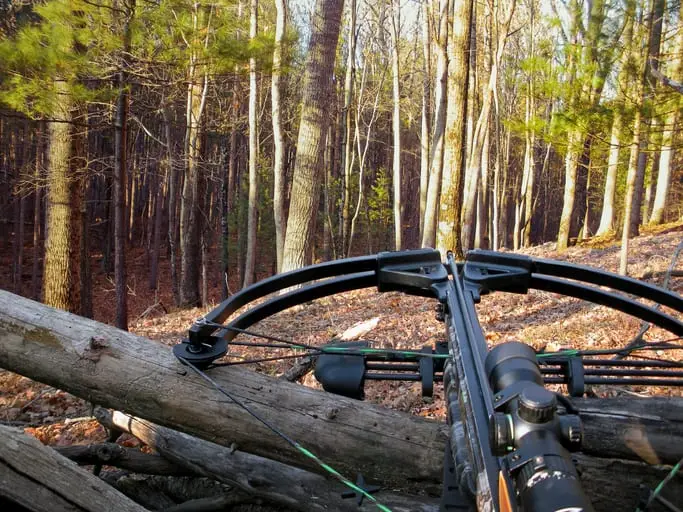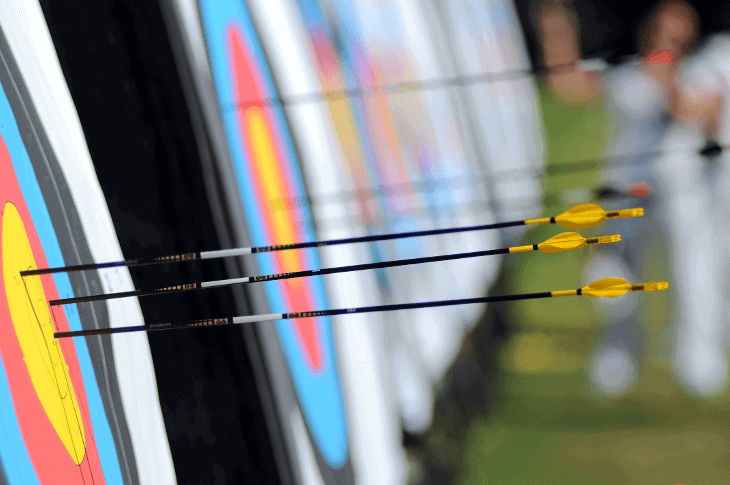Let’s be honest: it’s tough to get started in archery. There are so many different bows, so many measurements required to buy one, and so many different terms related to bow-buying, that when you’re starting out, it’s nigh on impossible to figure everything out. And that’s a shame, because a lot of folks end up purchasing a bow they’re excited about, only to find out later the bow they bought isn’t quite what they were looking for.
With that in mind, today we’re going to talk about one aspect of bow selection that usually gets overlooked: buying a target bow vs. a hunting bow.
If you’re new to archery, you might imagine that target bows would look a whole lot different than hunting bows, but believe it or not, the differences are very subtle. You could be looking for a target bow and end up buying a hunting bow and not even realize it (and, fun fact, this happened to a cousin of ours).
So below we’ll talk about the differences between these two styles of bows, and we’ll break this post up into two different categories: compound bow and recurve bows (and if you don’t know the difference between recurves and compounds, we’ve written about that here).
Target Compound Bows vs. Hunting Compound Bows
Here are the main differences between these two types of compound bows, and we’ve included two photos at the end of this section to detail exactly what we’re talking about:
Length. This is the most obvious difference: the length of the bow. Hunting compounds tend to be short and squat (typically around 28 to 34 inches, axle-to-axle), while target bows tend to be longer (typically around 38 to 40 inches, axle-to-axle).
Longer bows tend to be more “forgiving”—that is, if an archer has imperfections in his/her form, it’ll be less likely to mess up his/her shot—and that’s a great thing for a target archer, who’s interested in accuracy and precision.
Shorter bows are a little less forgiving, but they’re easier to maneuver—and if you’re a bowhunting, trudging through muck and mire and brush and bush—a long bow is going to get snagged on just about everything. Shorter compounds are a much better option for hunting.
You may be wondering, “Well, aren’t bowhunters accuracy and precision, too?” They most certainly are, but the area a bowhunter needs to hit is usually a good deal bigger than the area a target shooter needs to hit, and the other qualities of a hunting bow—such as speed and let-off, which we’ll talk about in a second—make up for the (very) slight decrease in accuracy.
Brace Height. This is related to bow length. Brace height—that is, the measurement of the bow string to the belly of the riser grip—tends to be longer on a target compound (usually around 7 or 8 inches), and that makes them slower, but more forgiving (that’s the general consensus, anyway, although there are some folks who disagree with that). The brace height on a hunting compound tends to be smaller (usually in the area of 5 to 6 inches), and that makes hunting bows a little less forgiving, but it makes them shoot arrows FAST.
Fast arrows are an important thing for a bowhunter, so let’s talk about…
Arrow Speed. Speed is a great thing for a target archer, but not their #1 concern. If a target archer could slowly float his/her arrows and hit a bullseye every time, we imagine they’d be fine with that. Hunters don’t have that luxury—they need their arrows to fly as quickly as possible, because certain types of prey are FAST, and a loud release tells that prey he/she needs to skedaddle. So, generally, target bows tend to have lower draw weights and shoot slower arrows, whereas hunting bows tend to have higher draw weights and shoot faster arrows.
There’s another reason speed is to important hunters, though. It’s not only important that hunters hit their prey—they need to be certain that their arrows will have enough speed and force to penetrate their prey (and the bigger the animal, the more speed and force is needed). The measurement bowhunters use to ensure their arrows will penetrate game is kinetic energy, which is defined roughly as “the energy a specific object has because of that object’s motion.”
A full description of kinetic energy is unfortunately beyond the scope of our post here, but we’ve written extensively about it elsewhere (so take a look!) and you can find another good description of kinetic energy at Bowhunting.com, but for now, all you need to remember is that speed is a good thing for target archers, but an imperative thing for bowhunters, so hunting bows usually have a shorter brace height to increase the speed at which they shoot arrows.
Shape. Target compounds generally tend to have a straighter riser than hunting bows, and that’s to increase the length of the bow. As we mentioned earlier, a longer bow with a longer brace height is usually more forgiving, but there’s another reason we didn’t mention—and that’s the string angle. At full draw, the string angle on a large bow is going to be a little bit less severe than the string angle on a small bow. That open angle on a target compound makes releasing the bow string a little easier, and it’s a little easier on the fingers, too.
Let-Off. When a compound bow is at full draw, it’s dramatically easier to hold the bow string back, and the term for that is “let-off.” If—just for round numbers—you have a bow with a draw weight of 100 pounds and an 80% let-off, at full draw, it’ll feel like you’re drawing 20 pounds.
That’s a big advantage for bowhunters, who may spot prey, draw their arrows, and then need to aim for a while in order to hone in on a deer / boar / elk that’s shuffling around, and let-off on hunting bows tends to range anywhere from 75% to 90%.
Target archers who are shooting at a stationary target don’t need to take as much time when aiming—in fact, aiming too long for a target archer is a bad thing, generally—so let-off isn’t as important, and let-offs between 60% and 75% are pretty common on target compounds.
Stabilizers. A stabilizer is a long rod that archers attach to the back of the bow (that is, the side of the bow facing away from archer when he/she is drawing it). It’s used to give the bow some—you guessed it!—stability, and you’ll see them on both target bows and hunting bows. The difference is, they’re going to be a LOT longer on target bows—anywhere from 10 inches to 30 inches or more. Hunting bows tend to have stabilizers that are in the range of 4 to 10 inches (again, because it would be a pain to navigate the woods with a stabilizer bumping into everything).
Colors. This isn’t a hard-and-fast rule, but bow companies usually manufacture target bows in bright colors—red, blues, yellows, neons, etc.—and hunting bows tend to be black or camo.
We Promised Some Examples
So here they are. In the photo below, the woman is using a target compound. Notice how long the bow is, and how open the string angle is at full draw:

Compare that to the shortness and squatness of the hunting bow below, as well as the more severe string angle:

Target Recurve Bows vs. Hunting Recurve Bows
Most of what we wrote above regarding compounds is true for recurves: target recurves tend to be longer than hunting recurves, in order to be a little more forgiving; they tend to focus on accuracy, rather than speed; and because they’re larger than hunting recurves, they tend to have a more open string angle at full draw. Hunting recurves tend to be shorter and squatter, have shorter brace heights focus more on speed rather than accuracy. At the end of the day, hunting bows focus on power first with pin-point accuracy being a secondary concern, and target bows focus on pin-point accuracy first with power being a secondary concern.
There are two main measurement stats that show the differences between target recurves and compound recurves:
Length. Target recurves tend to range from 66 inches to 72 includes; hunting recurves are usually range from 50 to 64 inches.
Draw Weights. The draw weights for target recurves are usually somewhere between 35 and 55 pounds for men and 30 to 50 pounds for women, but most hunting recurves need to be at least 45 pounds, because states usually have requirements about the draw weight a bow hunter needs to use. The requirement is usually a 45-pound draw, but the requirement can be more (and much more) for larger game.
Target recurves are a lot more common than hunting recurves, and (in our humble opinion), that’s a good thing—recurve bows are (in general!) a little harder to shoot that compound bows and a little harder to shoot accurately, and when you’re hunting, you want to be as effective as possible. A lousy shot will wound an animal instead of killing it, and that’s just cruel. It’s our opinion that if you’re hunting with a recurve bow, you REALLY need to be an accurate shot.
Shoot What You Got, But Follow the Rules
There you have it! Hopefully that sheds a little light on things. When you’re purchasing a bow, it helps to know what you’ll be using it for, so search your heart’s desire to know how you want to use your bow, and purchase accordingly.
Before we sign off, there are a few things we want to mention:
Governing Bodies. If you’re in a competition, usually there will be very strict rules about the length of the bow you can use, the brace height, and so on. Be sure to look all that up before you sign up.
Whatever Works. While there are definite differences between target bows and hunting bows, if you’re skillful enough—and you need to be skillful enough—very often you can use either type of bow for whatever activity you’ve got planned. For instance, we know of a few folks who actually prefer longer bows when hunting from a tree stand, because you won’t need a shorter bow in that situation—you’re not maneuvering your way through thicket and brush, so a longer bow won’t get in the way very much, and longer bows tend to be more forgiving. Find what works for you.
The Averages… From what we’ve seen over the years, most people buying a recurve bow tend to buy one for target archery, and most people who buy a compound bow buy one that’s amenable to hunting (even if they don’t realize it—we found that it’s somewhat rare that someone new to archery buys a target compound). If you specifically want a hunting recurve or a target compound, look for those items specifically, because most bows are target recurves or hunting compounds. Again, know how you want to use your bow, so you can choose wisely.
And… there you go! Have fun, be safe, and happy shooting, y’all!




